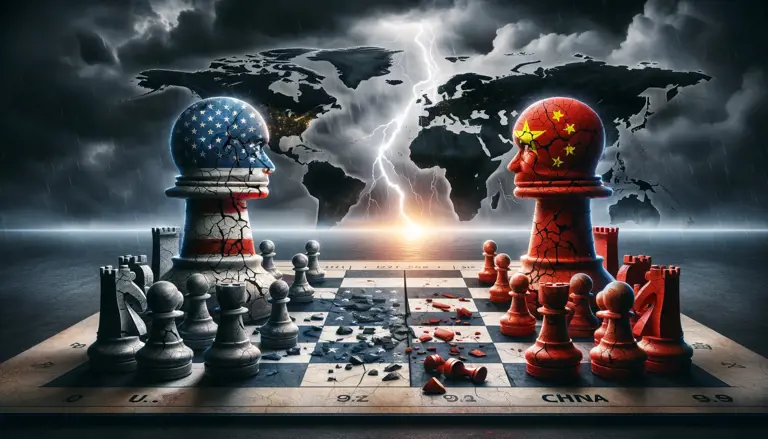The tension between the United States and China has reached a critical juncture, evolving into a multifaceted financial conflict that threatens to spiral into catastrophe. At the heart of this escalating dispute lies a series of economic and political maneuvers that are shaking the foundations of global stability.
It all began with Secretary of the Treasury Janet Yellen’s call for China to purchase a staggering $400 billion in U.S. debt, a request that went unanswered. This apparent snub set off a chain reaction of retaliatory measures, as both sides sought to assert their economic prowess and geopolitical influence.
One of the most significant moves came from the United States, which opted against lowering interest rates—a decision that directly targeted China’s economic infrastructure. By maintaining a restrictive monetary policy, the U.S. aimed to apply pressure on China’s stock market, thereby limiting its ability to navigate the turbulent waters of the global financial landscape.
Meanwhile, Secretary of State Antony Blinken attempted to leverage diplomatic pressure, urging Beijing to sever its trade ties with Russia. However, these efforts proved futile, prompting a reassessment of U.S. strategies regarding economic and diplomatic engagement with China.
In response to these developments, the U.S. embarked on a course of monetary expansion, flooding the market with U.S. dollars in a bid to bolster its economic position. However, this aggressive approach carries significant risks, as projections suggest that the national debt could skyrocket to an astronomical $54 trillion by 2034 if current policies persist—a scenario that could have far-reaching implications for the global economy.
As tensions escalate, the specter of conflict looms large. While the U.S. appears to be flirting with the idea of instigating a global conflict—potentially World War III—to erase its mounting debt, China has been charting a different course, focusing on fostering innovation and private enterprise. However, Beijing’s efforts are being hampered by capital outflows to the U.S., attracted by the promise of high-interest rates.
Amidst speculation that the U.S. may resort to drastic measures—such as cutting off Chinese banks from the international financial system—the potential for a full-blown financial war looms large. This could mirror previous episodes, such as the Huawei sanctions, which inflicted pain but did not prove fatal. Nevertheless, such a scenario could prompt China to retaliate decisively, potentially tipping the balance of power in the global economic landscape.
Furthermore, the U.S.’s weaponization of the dollar could accelerate global de-dollarization—a trend already underway as nations seek to mitigate their exposure to the volatility of U.S. economic policies. Domestically, the consequences could be dire, with the majority of Americans facing economic hardship if stability is not restored.
In this volatile environment, dialogue remains essential. President Xi Jinping’s recent meeting with Blinken underscored the importance of constructive engagement in resolving differences and maintaining stability. However, underlying tensions persist, fueled by accusations of Chinese support for Russia’s military actions in Ukraine and ongoing trade disputes.
As these economic giants continue to clash, the world watches with bated breath, hoping for a resolution that averts the worst-case scenarios envisioned by pundits and policymakers. Indeed, with the global economy already under significant strain, the last thing it needs is a full-blown financial conflict between two of its largest players.
